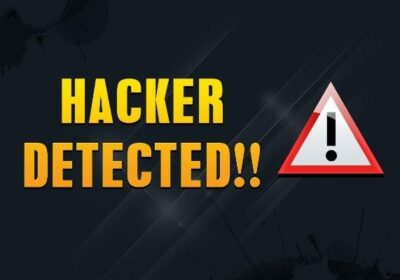In the age of technology, the digital landscape brings with it both convenience and new risks. One such risk is webcam hacking. Hackers employ various techniques to compromise webcams, potentially invading our privacy and security. In this article, we delve into the world of webcam hacking, the methods hackers use, and how to protect ourselves from these invasive intrusions.
Methods Employed in Webcam Hacking
Webcam hacking is a violation of privacy and often illegal. However, understanding how it occurs is essential for safeguarding your privacy:
1. Remote Access Tools (RATs):
- Remote Access Tools, or RATs, are a primary means of webcam hacking. These tools allow hackers to gain unauthorized access to webcams remotely and control them without the user’s knowledge.
- Ethical hackers also use RATs for security testing to uncover vulnerabilities and enhance webcam security.
- Popular RATs include DarkComet, Poison Ivy, and Blackshades.
2. Exploitation Techniques:
- Hackers exploit vulnerabilities in webcam software, firmware, or operating systems. This involves meticulously analyzing code to identify weaknesses that can be exploited to gain access to the webcam.
- Techniques like buffer overflow attacks, code injection, and privilege escalation are used to compromise the webcam system.
- Keeping software and firmware up to date is crucial to mitigate the risk of exploitation.
3. Social Engineering and Phishing:
- Webcam hacking can also be accomplished through social engineering techniques and phishing attacks. Hackers craft convincing messages, emails, or social media posts to deceive users into clicking on malicious links or downloading infected files.
- User awareness and education are vital in recognizing and avoiding social engineering tactics.
4. Webcam Surveillance Software:
- Certain webcam surveillance software, while not inherently malicious, can be exploited by hackers to gain unauthorized access to webcams.
- These applications, designed for legitimate purposes, can expose vulnerabilities if not correctly configured or secured.
- Proper configuration and adherence to manufacturer guidelines are crucial for securing webcam surveillance software.
Risks Associated with Webcam Hacking
Webcam hacking poses significant risks to individuals and organizations. Some potential consequences include:
- Invasion of Privacy: Webcam hacking can result in the invasion of personal lives, potentially capturing sensitive moments without consent.
- Exposure of Sensitive Information: The compromised webcam may inadvertently reveal confidential or sensitive information.
- Cybercriminal Activities: Hackers may exploit webcam footage for blackmail or identity theft, causing significant harm to victims.
To address these risks, it is essential to take proactive measures to protect your privacy.
Protecting Your Webcam
Here are some best practices to safeguard your webcam and personal privacy:
1. Keep Software Up to Date:
- Regularly update your webcam software and drivers. Manufacturers often release security patches to address vulnerabilities.
2. Use Webcam Covers:
- Employ physical covers or webcam blockers when your webcam is not in use to prevent unauthorized access.
3. Disable Remote Access Features:
- If you don’t require remote access to your webcam, disable these features to reduce the risk of unauthorized control.
Recognizing Webcam Hacking Attempts
Being vigilant and recognizing signs of a compromised webcam is crucial in mitigating risks. Watch for:
- LED Light Activity: Unexpected LED light activity on your webcam may indicate unauthorized access.
- Unusual Noises: Unusual sounds coming from your device can be a sign of unauthorized access.
- Background Software: Be aware of any unauthorized software running in the background.
- Network Traffic and Behavior: Monitor network traffic and system behavior to detect any unauthorized access or data transfers.
Legal Implications
Webcam hacking is illegal and unethical in most jurisdictions. Laws and regulations exist to protect individuals’ privacy and prosecute those involved in such activities. Hacking someone’s webcam without their consent is a violation of their privacy rights and can lead to severe legal consequences.
Conclusion
In an era where technology dominates our lives, it is essential to be aware of the potential risks associated with webcam hacking. Understanding the techniques employed by hackers, recognizing signs of compromise, and implementing security measures can protect you from becoming a victim of webcam hacking. Safeguarding your privacy and security should be a top priority, and by taking proactive steps, you can ensure a safer digital environment for yourself and others.
FAQs
1. Can someone hack my webcam without me knowing?
- Yes, hackers can gain unauthorized access to webcams without the victim’s knowledge. They may exploit vulnerabilities or employ social engineering techniques.
2. How can I protect myself from webcam hacking?
- Keep webcam software and drivers up to date, use physical covers or webcam blockers, and be cautious of suspicious emails or software updates.
3. What should I do if I suspect my webcam has been hacked?
- Disconnect your webcam from your device immediately. Scan for malware or viruses, update security software, and consider consulting a cybersecurity professional.
4. Is webcam hacking illegal?
- Yes, webcam hacking is illegal in most jurisdictions and can lead to severe legal consequences.
5. Are all webcams equally vulnerable to hacking?
- No, vulnerability varies based on factors like manufacturer security measures, software updates, and user practices. Choose reputable brands and follow security best practices to reduce the risk.



